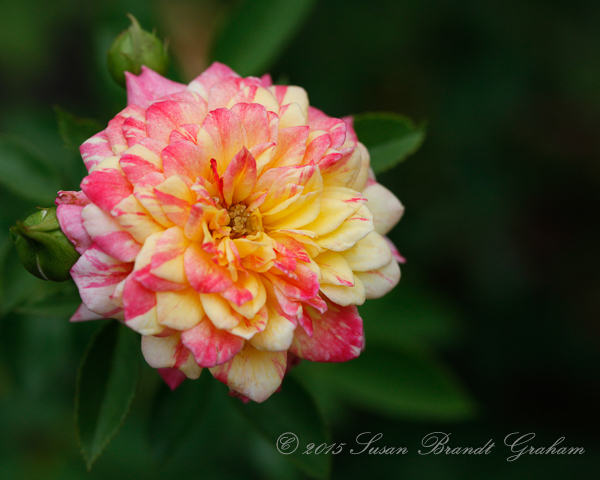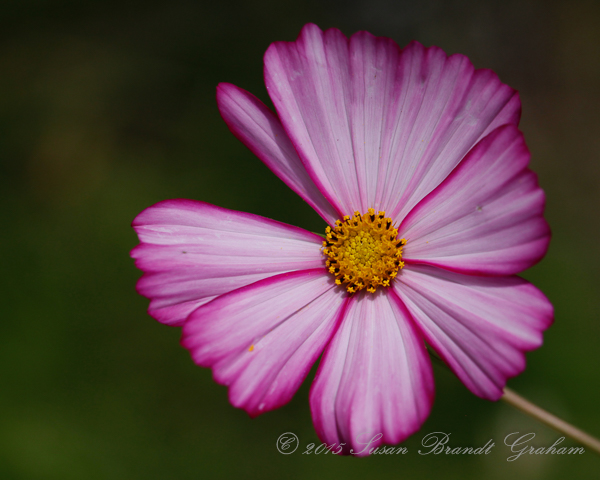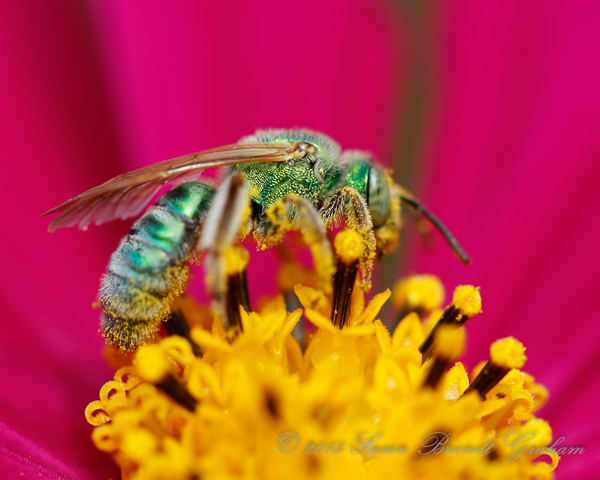Photo Challenge
Photo challenge to myself – go photograph some things you frequently photograph, the way you frequently photograph them. But, use only the jpg, with no editing other than cropping and applying a copyright watermark.
Recently some photographer friends and I had one of the very common discussions floating around since the advent of digital photography. Is editing a raw file (digital negative) kind of “cheating,” or absolutely necessary to realize the full potential of digital photography? Anyone who knows me at all knows that developing my own raw files is something I do as part of my standard workflow, and overall will continue to do. It is one of the things I really love about digital photography!
The discussion with friends, however, made me want to go out and see what I would get with jpg rather than raw files, with the only editing being cropping to an 8×10 ratio rather than an 8×12 ratio, and the application of a watermark.
These are the results.

Miniature rose, ‘Climbing Earthquake’

Cosmos, with “imperfect beauty”

Green bee with pollen, on cosmos
The challenge to myself was a fun exercise, but I am a confirmed “photograph in raw” person, just because I truly enjoy the editing process.
LightStalking has a good discussion of the benefits of using raw files rather than jpgs.



People who wonder about whether taking raw files and adjusting them is cheating has never worked in a darkroom. The raw file is as close to a negative as you are going to get in a digital system. Ideally, you want to get a perfect exposure not matter what photographic medium you are using, but perfect exposures don’t always happen. When you work in the darkroom you end up cropping, dodging, burning, using different papers, chemistries, temperatures, filters, etc. to get the quality of print you want. And you can get multiple prints from the same negative that have great varieties of tonal qualities, colors, and effects by using those different papers, chemicals, filters, re-exposing the paper, using toners, painting the prints and on and on and on. It’s just a whole lot more convenient and less mess to work in a digital darkroom than a real darkroom.
In my mind the only thing that is really cheating in the world of photography and digital imaging is stealing someone else’s photos, images, artwork. Other than that, use the tools available and go for it. I’ve ended up with some truly outstanding work from flashes failing to go off, forgetting to change the exposure, etc. And after doing lots of manipulation and work on the raw files, I ended up with some real surprises. Same thing with film. Once I’ve decided the image is worth the effort, and I have spent hours getting it the way I want it to look, is it cheating? I don’t thing so.
After my little rant, I have to say, your photos from your raw jpeg challenge are stunningly beautiful!
Hi, Tim. I really appreciate the effort you put into writing the comment! As you know, I agree completely with all of the points you make, but you can make them more forcefully because you continue to work in film as well as in digital. You have such credibility with both approaches. Again, I agree completely with your points!!!
And, thank you so much for the comment on these jpgs. 🙂
I know where you stand on the issue. I was happy to see the post so I could rant for a bit! Back in the day, some photo contests required photographers to submit original slides (do you know if they ever did that with rose shows?). Anyway, a transparency is going to be the best way to judge the quality of a photograph for the exposure, color and original composition. The problem was, prints from slides were really expensive and often not as good quality as prints from negatives.
Another back in the day is that I used to photograph the printed pages of our presentations at the office using print film, take the film to Carl’s Darkroom and have him develop it using an E-6 process for slide film instead of C-41 for negatives and mount the film in slide frames. The result was white print on a beautiful turquoise background with a blue tonality on the graphics — like gray scale. Then we projected the slides during presentations like a Power Point presentation today.
That is really interesting, about photographing printed pages of presentations for use as slides. I did not know about that, and I thank you for a new piece of knowledge.
Sometime when I first joined ARS (2000), slide transparencies were required for the ARS Magazine photography contest. I’m not sure when digital files were first allowed, but there was a time when both slides and digital files were allowed. Now the magazine photography contest is strictly digital. I really ought to look into those dates. I got my first digital camera (a little compact) in 2004. That is the one that died at your house when my mom and I were having dinner with you and Laurie, 2008. That is when I got the Canon G9, which had raw file capabilities and some manual controls. At the same time, I got Lightroom 2. I think, but am not positive, both transparencies and digital files were accepted. In 2009 I got my first full frame. Things certainly keep churning along in the digital realm!
Thanks for the educational comments!
There are images that you just cannot get without the help of RAW and post-processing, but you recognize that the conditions are right, the results can be stunning. Nice work! Christine
Hi, Christine! Thank you very much, both for the comment and for taking the time to write it. And,also, of course, for stopping by!